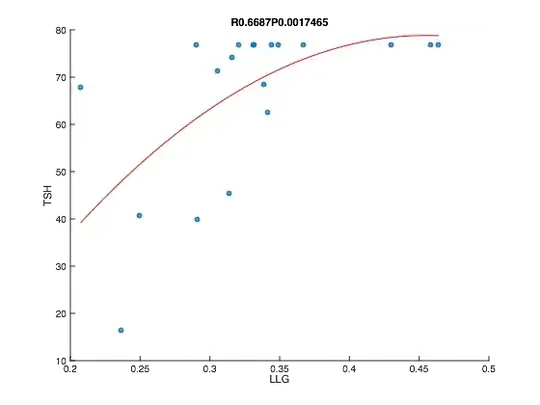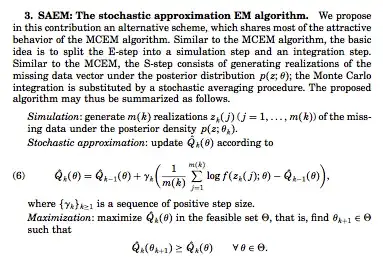
Above is the scatter plot of my data. The spearman's rho was 0.66 which was significant (p<0.005). I draw the fitting line using polynomials. My question: is it OK to choose arbitrary function for fitting line in this case? If so, what would be the best function for the curve fitting?

Above was drawn according to the below recommendation by Glen_b (Thanks a lot). Below is the R code for it.
install.packages('uniReg')
library(uniReg)
x <- read.delim('clipboard', header=FALSE)
y <- read.delim('clipboard', header=FALSE)
fit <- unireg(x$V1,y$V1,g=5,sigma=2)
z=seq(min(x$V1),max(x$V1),length=201)
uf=with(x,fit)
plot(x$V1, y$V1,type = 'p', col = 'blue', pch=16, xlab="LLG", ylab="TSH")
lines(z,uf$unimod.func(z),type = 'l', col = 'red' )